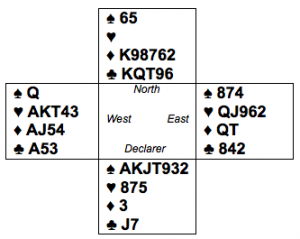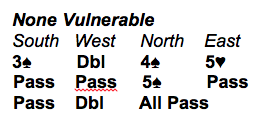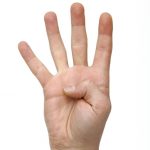Count Signals
Count Dracula may have been a scary fellow, but Count Signals can be the defenders’ best friend, as illustrated in this week’s deal. You are West, so try looking at just the N-W hands and see if you can beat 5♠ doubled.
You lead a high Heart, ruffed in Dummy. Then a Club is played to Declarer’s Jack. Do you win this trick? And how do propose to set the contract?
You could grab your ♣A and lead your trump. That will stop a second Heart ruff in Dummy. The danger is that, after drawing trumps, if Declarer has a second Club, she will be able to run the Clubs, pitching away all her red suit losers.
Does that mean you should duck the first Club trick? Not necessarily, that could also be fatal. Declarer’s Jack might be singleton in which case, if you duck, Declarer ruffs another Heart in Dummy, returns to hand with a Club ruff, and draws trumps. Her shape is likely to be 7=3=2=1, and she can now build her 11th trick by leading a Diamond towards Dummy.
So, the success of the defense depends upon West guessing whether Declarer started with one or two Clubs. But no guessing is required for those defenders who give count signals when Declarer leads a suit. If E-W are using this valuable tool then, on the first round of Clubs, East plays low to show an odd number (of Clubs), and high to show an even number.
On the actual deal, East plays the Two, so West knows that Declarer’s ♣J cannot be singleton and that he can safely duck that trick. After winning the ♣J, Declarer ruffs another Heart in Dummy, but can score no more than 10 tricks. If East started with ♣8742, he would play the Eight on the first round of Clubs (high to show an even number), from which West deduces that the ♣J is singleton (Jxx is possible but less likely) and that the ♣A must be grabbed and a trump returned.
Article courtesy of the American Contract Bridge League. Visit www.acbl.org for more about the fascinating game of bridge.







